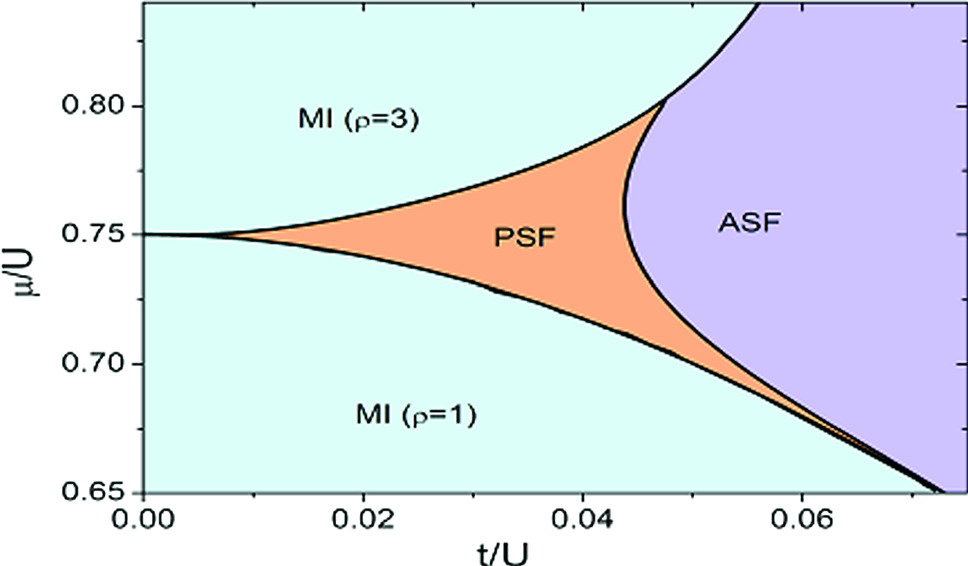https://doi.org/10.1140/epjd/s10053-024-00834-6
Regular Article - Cold Matter and Quantum Gases
Revisiting pairing of bosons in one-dimensional Bose–Hubbard model with three-body interaction using CMFT+DMRG method
1
School of Physical and Applied Sciences, Goa University, 403206, Taleigao Plateau, Goa, India
2
Department of Physics, Parvatibai Chowgule College of Arts and Science, 403602, Gogol, Margao, Goa, India
Received:
28
March
2023
Accepted:
25
March
2024
Published online:
13
April
2024
We revisit the Bose–Hubbard model with hard-core three-body attractive interactions in one-dimension using the cluster mean-field theory with the density-matrix renormalization group. Our study focuses on the region of the phase diagram between density one Mott MI(1) and density three Mott MI(3) insulator lobes and studies the pairing of bosons. We calculate the order parameters and condensate factors corresponding to atomic and pair superfluid phases. We find no phase transition directly from MI(1) to MI(3) when the attractive three-body interaction is present. The pair superfluid dominates the region between MI(1) and MI(3) when the hopping parameter is small. As the hopping parameter increases, the model shows a phase transition to the atomic superfluid. However, the paring of bosons persists even in the atomic superfluid phases. We finally obtain the phase diagram and compare it with earlier results.
Chetana G. F. Gaonkar, Pallavi P. Gaude and Ananya Das have contributed equally to this work.
Copyright comment Springer Nature or its licensor (e.g. a society or other partner) holds exclusive rights to this article under a publishing agreement with the author(s) or other rightsholder(s); author self-archiving of the accepted manuscript version of this article is solely governed by the terms of such publishing agreement and applicable law.
© The Author(s), under exclusive licence to EDP Sciences, SIF and Springer-Verlag GmbH Germany, part of Springer Nature 2024. Springer Nature or its licensor (e.g. a society or other partner) holds exclusive rights to this article under a publishing agreement with the author(s) or other rightsholder(s); author self-archiving of the accepted manuscript version of this article is solely governed by the terms of such publishing agreement and applicable law.





